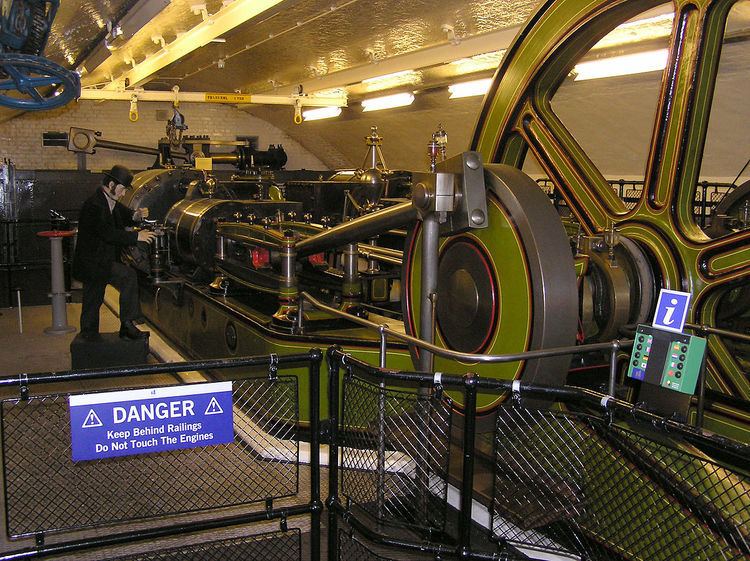Stationary steam engines are fixed steam engines used for pumping or driving mills and factories, and for power generation. They are distinct from locomotive engines used on railways, traction engines for heavy steam haulage on roads, steam cars (and other motor vehicles), agricultural engines used for ploughing or threshing, marine engines, and the steam turbines used as the mechanism of power generation for most nuclear power plants.
They were introduced during the 18th century and widely made for the whole of the 19th century and most of the first half of the 20th century, only declining as electricity supply and the internal combustion engine became more widespread.
There are different patterns of stationary steam engines, distinguished by the layout of the cylinders and crankshaft:
Beam engines have a rocking beam providing the connection between the vertical cylinder and crankshaft.Table engines have the crosshead above the vertical cylinder and the crankshaft below.Horizontal engines have a horizontal cylinder.Vertical engines have a vertical cylinder.Inclined engines have an inclined cylinder.Stationary engines may be classified by secondary characteristics as well:
High-speed engines are distinguished by fast-acting valves.Corliss engines are distinguished by special rotary valve gear.Uniflow engines have admission valves at the cylinder heads and exhaust ports at the midpoint.When stationary engines had multiple cylinders, they could be classified as:
Simple engines, with multiple identical cylinders operating on a common crankshaft.Compound engines which use the exhaust from high-pressure cylinders to power low-pressure cylinders.An engine could be run in simple or condensing mode:
Simple mode meant the exhaust gas left the cylinder and passed straight into the atmosphereIn condensing mode, the steam was cooled in a separate cylinder, and changed from vapour to liquid water, creating a vacuum that assisted with the motion. This could be done with a water-cooled plate that acted as a heat sink, or pumping-in a spray of water.Stationary engines may also be classified by their application:
Pumping engines are found in pumping stations.Mill engines to power textile millsWinding engines power various types of hoists.Refrigeration engines are typically coupled to ammonia compressors.Stationary engines could be classified by the manufacturer
Boulton & WattGeorge Saxon & CoIn order of evolution:
Savery atmospheric engine (1700)Newcomen engine (1712)Watt engine (1775)Trevithick (1799)Hornblower (1781)Woolf (1804)McNaught'ed compound beam engines (1845)Cornish engine (1812)Corliss engine(1859)Porter-Allen engine (1862)Uniflow engine Todd's (1885)Steam turbine (1889)
